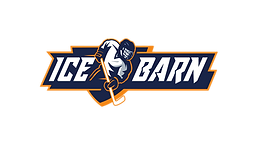
Introduction to Body Contact: Fundamentals and Confidence
Once players reach the Squirt level, the focus becomes the introduction to body contact and contact competition.
Kids at the squirt level start gaining the ability to understand additional aspects of safety. This enables coaches to start explaining the reasoning behind those concepts.
Coaches should be teaching Squirt players about stability – proper use of their edges, use of their skates if they’re going into the boards. These are things you work with kids without necessarily mentioning it as a Mite, but you need to talk about it as a Squirt because at that age players can understand the seriousness of injury at that point.
Learning body contact skills helps to put a little bit of the responsibility on the player going into the boards for his or her own safety. Learning to be aware of where they are on the ice with respect to the play, with respect to the boards and understand that at a body’s length away from the boards – you’re in a vulnerable position.”
In addition to continuing to build players’ skills in contact situations, angling should also be introduced.
Teaching Body Checking
A couple of years ago, when checking was removed from Peewees, there was some debate among coaches as to which level body checking should be taught at.
Many coaches initial reaction was, ‘Oh there’s no checking in Peewee level, therefore, we’re not going to teach checking at the Peewee level’,” in fact – that is contrary to what is most important – players need to understand not only how to protect themselves, but they need to understand WHY we “check” and the PURPOSE of checking – they need to understand we check to get the puck back, not simply to “hit someone” – we WANT THE PUCK, and we need to get it back without penalty, nor injury.
Checking just isn’t with your “body” it’s with body position, form, technique and the KNOWLEDGE of when and how to get the puck back.
We also need to learn these skills in order to prepare for when body contact gets more serious, and the bodies colliding are bigger, stronger, heavier. Learning proper form starts early, and this leads to better skills, better results, and CONFIDENCE.
Let me reiterate: the most important lesson for players to remember once they get to the age levels where checking is taught and allowed in games is that the goal of body checking is to separate the opponent from the puck and regain possession.
You will see at times at the Bantam and High School level where players go out of their stance to try and make contact they’re actually trying to hurt somebody. Any time you are trying to hurt somebody, you’re probably going to get a major penalty. That’s even at the highest levels of the game. This is also perfect description of an INEFFECTIVE player, and UNPREPARED player. Teams don’t need these players.
If players stay within their stance like they are supposed to, their hips and shoulders become the primary points of contact rather than the elbow, arm or hands. When coupled with avoiding the back, head, or knees of an opponent, this technique significantly decreases the likelihood of injury for both players without reducing effectiveness.
Learning and practicing these skills NOW, when the player is young leads to better outcomes for the individual player, and his team.
Smart checkers have the puck more. Players who have the puck more are more valuable to their team, and those are the players that coaches want.
